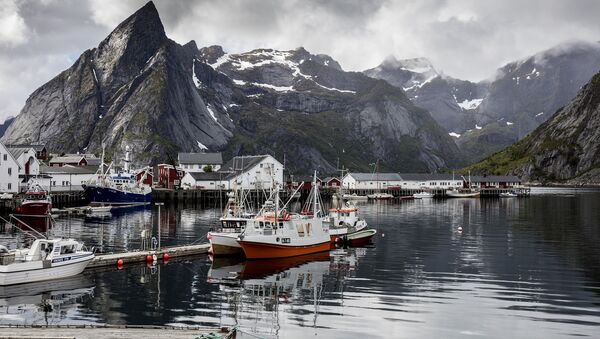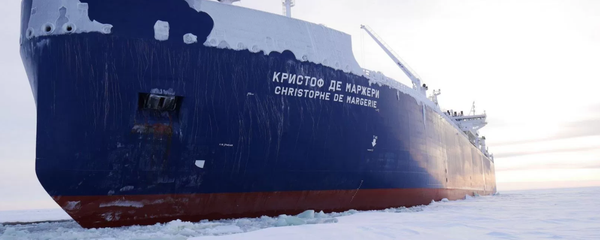Russian tanker Christophe de Margerie transported liquefied natural gas (LNG) from Norway to South Korea in just 19 days, some 30 percent faster than the normal Suez Canal route.
This was also the first time a tanker had traveled through the Northern Sea Route, passing the Russian Arctic in a record six and a half days, without the aid of an ice breaker. It averaged some 16 mph through ice fields which at times were four feet thick
“Many shipping companies in Northern Europe and the North Pacific have been quite critical, but now rather than going through Suez Canal or Panama Canal it is possible to go straight through the top of the Arctic and into the North Pacific. This cuts the journey by 7 days,” Boxall told Radio Sputnik in an interview.
Boxall further said that it was actually in 2010 that it became possible to sail through the Northern route, past Siberia through the Barents Strait into the North Pacific in recorded history.
According to him, this route is primarily about reducing costs and about reducing the amount of pollutants that are put into the atmosphere from the shipping itself.
However, the rapid melting of the Arctic ice does raise a number of concerns.
“The fact that the Arctic ice is melting can affect and will affect the climate of much of Northern Europe. Although transporting of liquid gas by shipping does reduce the environmental impact because the new ships are being built to have lower emissions, so in this way shipping really will become a very environmentally friendly way of transporting goods to their designated locations,” Boxall said.
“Any accidents or spills that occur in this region will have a dramatic impact on the environment. If any oil or gas is spilled it will remain in that environment for much longer than say in the tropics or more temperate latitudes,” the expert said.
Talking about the Arctic ice melting, Boxall said that it is a matter of serious concern because, “We are losing habitat. You have a habitat which supports polar bears, seals and even people who live there and rely on ice formations during winter to go hunting. But it’s not only regional impact; it has a much wider impact.”
He further spoke about the impact the melting of Arctic ice has on the global climate and environment.
As ice on Earth’s northern pole melts with ever increasing speed, new shipping routes, long sought after but only now being realized, have opened up the possibility of faster and less expensive transport between many parts of the world.



